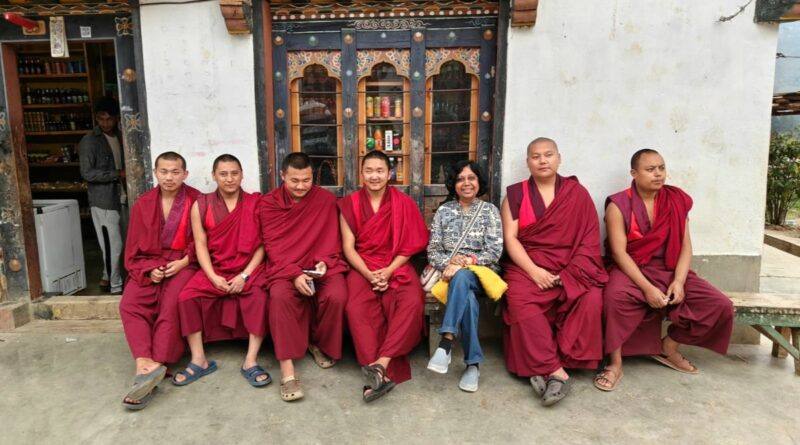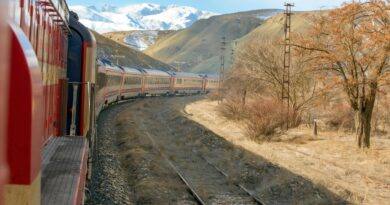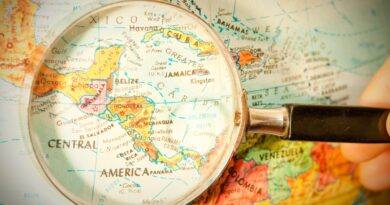The Best Of Bhutan: A Unique World Of Happiness
An amazing spring trip to bhutan – the land of happiness and zero carbon emission
Bhutan is primarily a Buddhist kingdom sitting in the lap of the mighty Himalayas. It is a landlocked country situated between China and India. The capital and largest city is Thimpu. One of the main attractions for tourists is the country’s culture and traditions. Bhutanese tradition is deeply steeped in its Buddhist heritage.
With a dual purpose in mind, which is to escape the scorching heat of Chennai’s summer and to see a beautiful country with cool weather conditions, my husband and I travelled to Bhutan in April/ May this year. We went through a travel agent and were very well taken care of. It was spring time in that country and there were flowers of various hues all around. We even got to see the beautiful purple Hyacinth tree for the first time, ever.
Bhutan has many fortresses with each fortress being primarily divided into two sections, one being the place of worship where tourists are allowed entry and the other being the administrative section where entry for tourists is restricted. The former part of fortresses is considered as Monastery, presided over by the Buddha as the worshipful deity. And each of these monasteries can best be described as prayer halls that are tranquil, peaceful, quiet, serene and full of positive vibes. A mere sight of these monasteries can bring peace to one’s soul.
We spent the first 2 nights in Thimpu, followed by two nights in Punakha and finally 3 nights in Paro.
THIMPU
Folk Heritage Museum
Our first place of visit in Thimpu was the Folk Heritage Museum. Also known as Phelchey Toenkhyim by the locals in Bhutan, the National Folk Museum was established to preserve and showcase Bhutan’s folk culture. Took its shape in the year 2001 as an initiative by the Queen Mother of Bhutan, to connect visitors with Bhutanese rural culture and traditions through antique exhibits, educational programs, demonstrations as well as documentation. The Museum itself is situated in a 150-year-old establishment that perfectly enshrines the cultural essence of Bhutan.
King’s Memorial Chorten
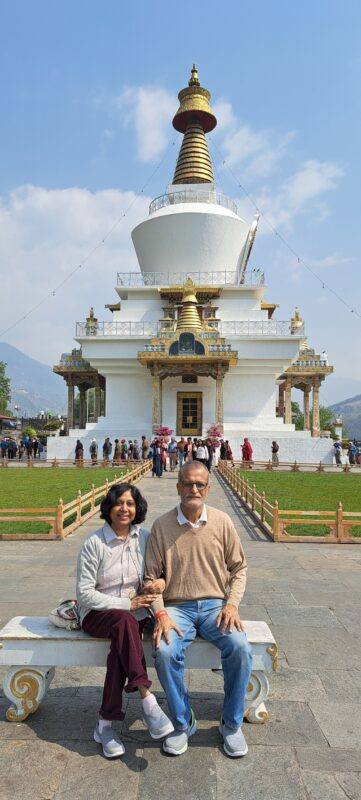
Next was the King’s Memorial Chorten. Chorten in Bhutanese means Buddhist shrine/stupa. The word “Chorten” literally translates to “Seat of Faith”. This Chorten is devoted to World Peace. It started gaining popularity amongst the locals when various major Buddhist religious festivals started taking place here and it is one of the best places to see in Thimphu. A place for amazing pics for Instagram and other social networking sites. They also have a sprecial stone bench where one can sit and click pics of oneself with the Chorten as a powerful backdrop. It is so popular that we had to wait for our turn to occupy the bench for the photographs. It actually reminded me of that famous bench at the Taj Mahal, Agra.
Buddha Dordenma statue

The Great Buddha Dordenma is a gigantic Shakyamuni Buddha statue in the mountains of Bhutan celebrating the 60th anniversary of fourth king Jigme Singye Wangchuck. The statue houses over one hundred thousand smaller Buddha statues, each of which, like the Great Buddha Dordenma itself, are made of bronze and gilded in gold. What an amazing sight it presents.
Trashichho dzong fortress

This Buddhist monastery is on the northern edge of the city of Thimpu, on the western bank of the Wang Chu (river). It has traditionally been the seat of the Druk Desi or “Deb Raja”, the head of Bhutan’s civil government, an office which has been combined with the kingship since the creation of the monarchy in 1907, and is summer capital of the country. It stands in a huge complex in all its glory beside the impressive King’s palace and lawns. This is where I found many beautiful Maple trees in full bloom. And again, I got to see a Maple tree for the first time, ever. Happiness.
Takin national park

This is a wildlife reserve dedicated to Takin which is the national animal of Bhutan. According to legend, a Tibetan saint by the name Drukpa Kunley, popularly called by the epithet “The Divine Madman” is credited with creating the Takin with unique features. Drukpa Kunley, who was not only a religious preacher but also a proficient tantric, was requested by the people of Bhutan during one of his religious lectures to conjure a miracle before them. The saint agreed to do so provided he was fed for lunch, a whole cow and a whole goat. Once served, he devoured the food of both animals and left out the bones. He then took out the head of the goat and fixed it to the skeleton of the cow and uttered abracadabra and the magic worked. With a snap, he created a live animal, which had the head of the goat and the body of the cow. The animal sprang up and moved on to the meadows to graze. The animal was then given the name dong gyem tsey (takin). Since then this animal has been a common sight in the hills of Bhutan. Because of this magical creation with high religious connotation, the animal has been adopted as the national animal of Bhutan.
There is a coffee shop in this park which serves coffee to the visitors at a very nominal price. And what was impressive was the fact that they make coffee out of coffee beans grown in the southern foothills of their own country. It is a freshly roasted blend, smooth and balanced and full of aroma. Never knew that Bhutan had its own coffee plantation.
Sangaygang valley view point
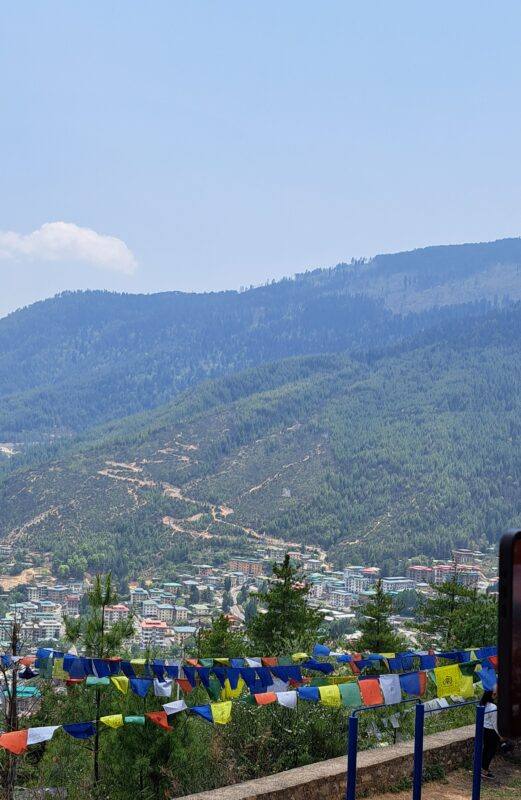
Bhutan, to say the least, has amazing valleys. We drove down to the famous Sangaygang view point to enjoy one of the most magnificent views of Thimphu valley. It was absolutely mesmerising to just stand at a high point and admire this beauty of nature – the great Sangaygang vallley.
This was followed by a visit to Zilukha Nunnery (for the female monks), the only such monastery in Thimphu. It houses about 60 nuns in its premises. We found a few dogs, stray dogs i guess, but well-fed by the nuns here, and these dogs looked more like bears with their fluffy outer layers!!!
From Thimpu, we then drove down to Punakha which is at a distance of about 75 kms.
Dochula Pass

Our first stop during our drive from Thimpu to Punakha was the amazing Dochula Pass. It is a mountain pass sitting in the midst of breathtaking snow covered Himalayas where 108 beautiful memorial Chortens or Stupas known as “Druk Wangyal Chortens” have been built. One can see many prayer flags along the roadside. This sight is very enchanting, to say the least. Here too they have a very nice coffee shop with scenic views all around. We enjoyed hot samosas and pakodas alongwith coffee/tea in this coffee shop which is situated in the midst of beautiful floral trees.
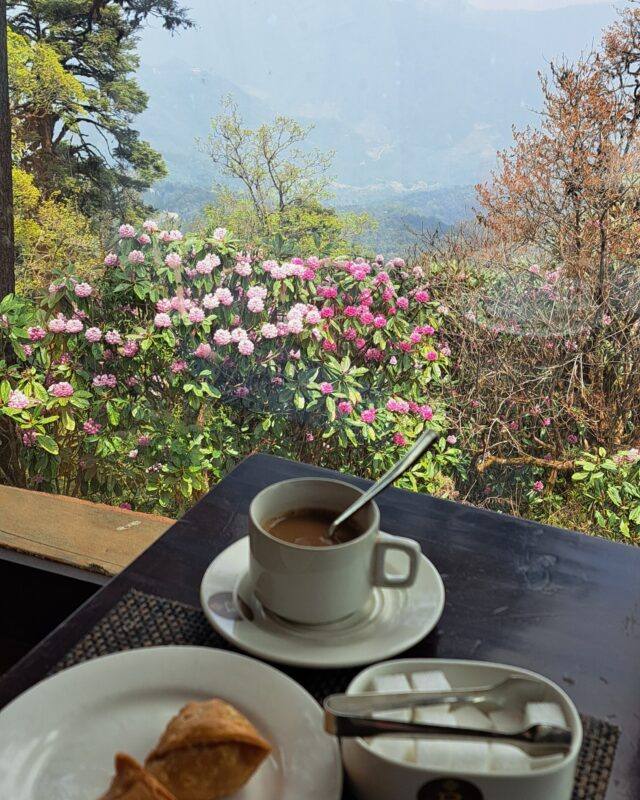
PUNAKHA
Our first stop in Punakha was the Suspension bridge.

The suspension bridge is a pedestrian bridge that crosses over the Po Chhu River in Punakha. The bridge is made of steel cables and wooden planks and is suspended high above the river below. The bridge spans a distance of approximately 160 meters and is about 1.2 meters wide.
Walking across the suspension bridge is an exhilarating experience, as you feel the bridge sway slightly under your feet with each step you take. I was not sure if I wanted to experience the walk on the swaying bridge, but our tour guide insisted that there was no cause for worry and with his encouragement I could reach the other end. My heart was filled with happiness and was in awe of the crystal clear water running underneath surrounded by breathtaking views of the mountains and valleys.
Punakha Dzong (Fortress/Monastry)

Considered “The palace of great happiness or bliss” Punakha Dzong is the administrative centre of Punakha district. It is the second oldest and second-largest Dzon in Bhutan and one of its most majestic structures. The Dzong is located between the Pho Chhu (Male) and Mo Chhu(Female) river in the Punakha–valley. In view of the healthy climate in the region, Punakha is the winter capital of Bhutan. Here too we got to see the beautiful, purple hyacinth trees.
PARO
Our next city was Paro. The distance from Punakha to Paro is about 125 Kms, a 4hr drive via Dochula, following the way back up the dramatic Wang Chhu and Paro Chhu river valleys, before crossing through Paro Town towards the north end of the valley.
Ta Dzong
We visited the Ta Dzong, originally built as Watchtower, which now houses National Museum. The extensive collection includes antique thangkha paintings, textiles, weapons and armour, household objects and a rich assortment of natural and historic artifacts. Taking photographs was not allowed here.
Tiger’s Nest
The next day, after breakfast we went up to the base camp of Taktshang Monastery. It is one of the most famous of Bhutan’s monasteries, perched on the side of a cliff 900m above the Paro valley floor. Legends say that Guru Rinpoche arrived here on the back of a tigress and meditated at this monastery and hence it is called ‘Tiger’s Nest’. Since it involved a trek up and down the mountain, that could take about 6 hrs to complete, we decided to skip the trek, and were glad to have done so.
Drukgyel Dzong
We then drove to Drukgyel Dzong, an old fortress (which is being restored) where Bhutanese warriors fought Tibetan invaders centuries ago. The snowy dome of sacred Chomolhari, “mountain of goddess” can be seen in all her glory from the approach road to this Dzong. This place again, is ideal for Insta pics. We took many pics unable to stop ourselves.
Shopping
Paro is a shopper’s paradise. It is a wonderful place to shop for wall paintings, Buddhist statues, decorative items, as well as bamboo and paper products and what have you. From traditional clothing that blends fashion with tradition to designed handicrafts, each item carries the spirit of Bhutan. So, when you embark on a shopping spree in Bhutan, you’re not just buying souvenirs, you’re immersing yourself in a vibrant culture that will stay with you long after you’ve left this enchanting kingdom.
Some general, unwritten rules to be observed while visiting a Monastery in Bhutan:
- Wear comfortable shoes as you may be standing or walking for long periods.
- Dress modestly out of respect for the religious setting and sacred nature.
- Avoid loud conversations to maintain the peaceful atmosphere and decorum.
- Do not touch the religious artefacts.
- Keep the area clean.
Cultural scene
As far as the culutural scene is concerned, dance, dramas and masked dances such as the Cham dance are common traditional features at festivals in Bhutan. We were entertained with one such amazing masked dance on an evening prior to our departure for India.

Food
And yes, rice (red rice), buckwheat, and maize, are the staples of Bhutanese cuisine. The local diet also includes pork, beef, yak meat, chicken, and lamb. Soups and stews of meat and dried vegetables spiced with chillies and cheese are also very popular.
Sport
Talking about Bhutan’s national and most popular sport – it is archery. This sport continues to enjoy mass appeal, is encouraged at all levels and competitions are held regularly in most villages. The joy of seeing an arrow leaving the bow and hitting the target, some 100 metres away, is unparalleled.
Since we had gone through a travel agent, it was a complete package of convenience which included:
- Air charges
- Hotel accommodation
- 3 meals per day
- Monument entry fee for sightseeing
- Comfortable vehicle for travel within the country
- Services of local english speaking guide throughout the trip
- Professional tour manager, etc.
Feel glad that we could do Bhutan the way we did, as it was in my bucket list for long. I now have beautiful memories of my visit and would highly recommend the readers to experience Bhutan, the land of valleys, mountains, rivers, flora, culture, heritage, peace, zero carbon emission, courteous & friendly people…. the number one happiest country in the world, the land of the Buddha. The country, as beautiful as heaven itself.

